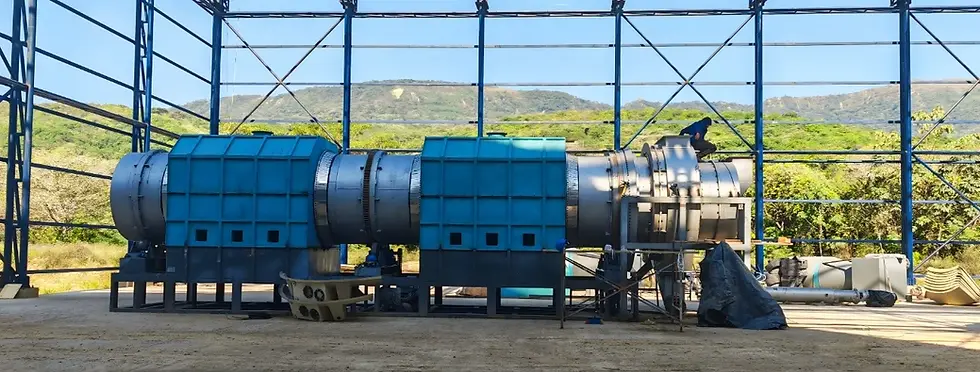The Role of Continuous Waste Tyre Pyrolysis Plant in Circular Economy Models
- lee784287
- 6月20日
- 讀畢需時 2 分鐘
In the pursuit of sustainable industrial practices, the circular economy model has emerged as a practical framework to reduce resource extraction and extend product life cycles. Within this framework, the continuous waste tyre pyrolysis plant has positioned itself as a technologically mature and economically viable solution for valorizing end-of-life tyres.
Addressing the Tyre Waste Challenge
Every year, millions of tonnes of discarded tyres accumulate in landfills or are incinerated—processes that either contribute to greenhouse gas emissions or squander potentially recoverable materials. A continuous waste tyre pyrolysis plant diverts this high-calorific-value waste stream from conventional disposal paths and converts it into reusable outputs through thermochemical decomposition. This transformation occurs in an oxygen-deprived environment, breaking down polymeric chains without combustion.

Material Recovery and Resource Reintroduction
The core value proposition of the continuous waste tyre pyrolysis plant lies in its ability to recover and reintegrate secondary raw materials into the economic cycle. The main outputs—pyrolysis oil, carbon black, and steel wire—each possess commercial utility. Pyrolysis oil can serve as an alternative fuel or undergo further refining for industrial use. Recovered carbon black, when properly processed, finds applications in rubber compounding, ink production, and pigment manufacturing. Embedded steel is typically separated magnetically and sent for remelting.
This closed-loop material reintegration exemplifies the restorative logic of circular economy principles. Instead of relying on virgin fossil-based feedstock, industries can tap into recovered pyrolysis derivatives, reducing environmental externalities and resource dependency.
Operational Continuity and Economic Efficiency
The continuous waste tyre pyrolysis plant offers distinct operational advantages over batch-mode systems. Its uninterrupted feed and discharge mechanism ensures minimal downtime, consistent throughput, and stable energy utilization. This not only increases annual processing capacity but also lowers per-ton operating costs, making it suitable for high-volume waste management infrastructures.
Moreover, automation and closed-loop cooling systems in continuous setups reduce labor requirements and environmental emissions. The operational efficiency enhances the plant's compatibility with circular economy demands, where scalability, energy conservation, and environmental performance are closely interlinked.
Enabling Industrial Symbiosis
A well-integrated continuous waste tyre pyrolysis plant can act as a cornerstone of industrial symbiosis. The pyrolysis oil may be supplied as fuel to nearby cement kilns or industrial boilers, while carbon black can feed adjacent manufacturing lines. This kind of cross-sectoral material exchange reduces transport costs, limits energy dissipation, and fosters local circularity.
Furthermore, such integration supports producer responsibility frameworks by offering tyre manufacturers and waste management firms a direct channel to fulfill their recycling obligations and sustainability metrics.
Conclusion
The continuous waste tyre pyrolysis plant represents a convergence of environmental stewardship and industrial pragmatism. By converting problematic tyre waste into useful commodities, it fulfills the dual mandate of waste diversion and resource regeneration—both critical to advancing circular economy models. Its technical maturity, operational continuity, and material recovery capability position it as a pivotal component in reshaping how industrial societies perceive and process waste.



留言